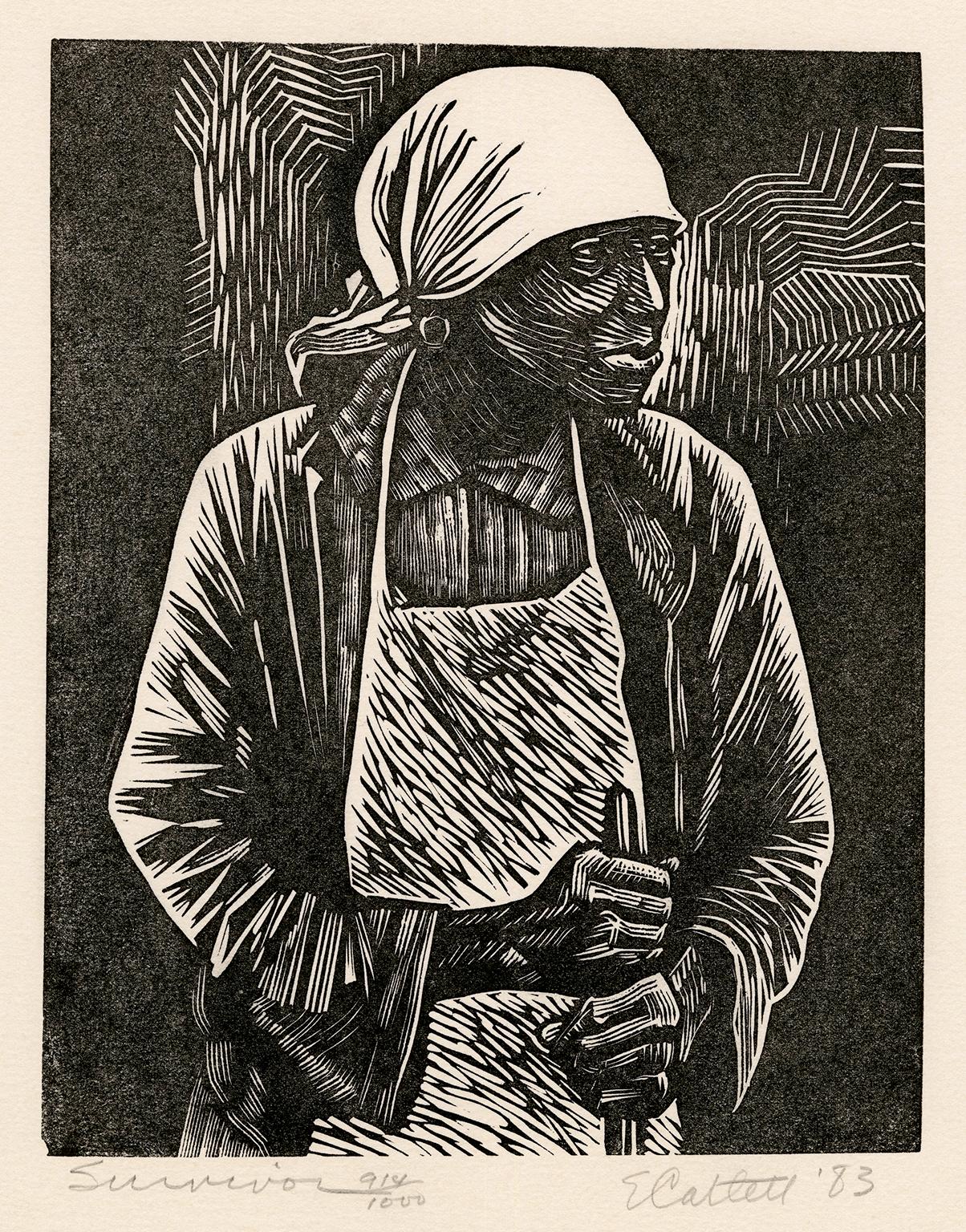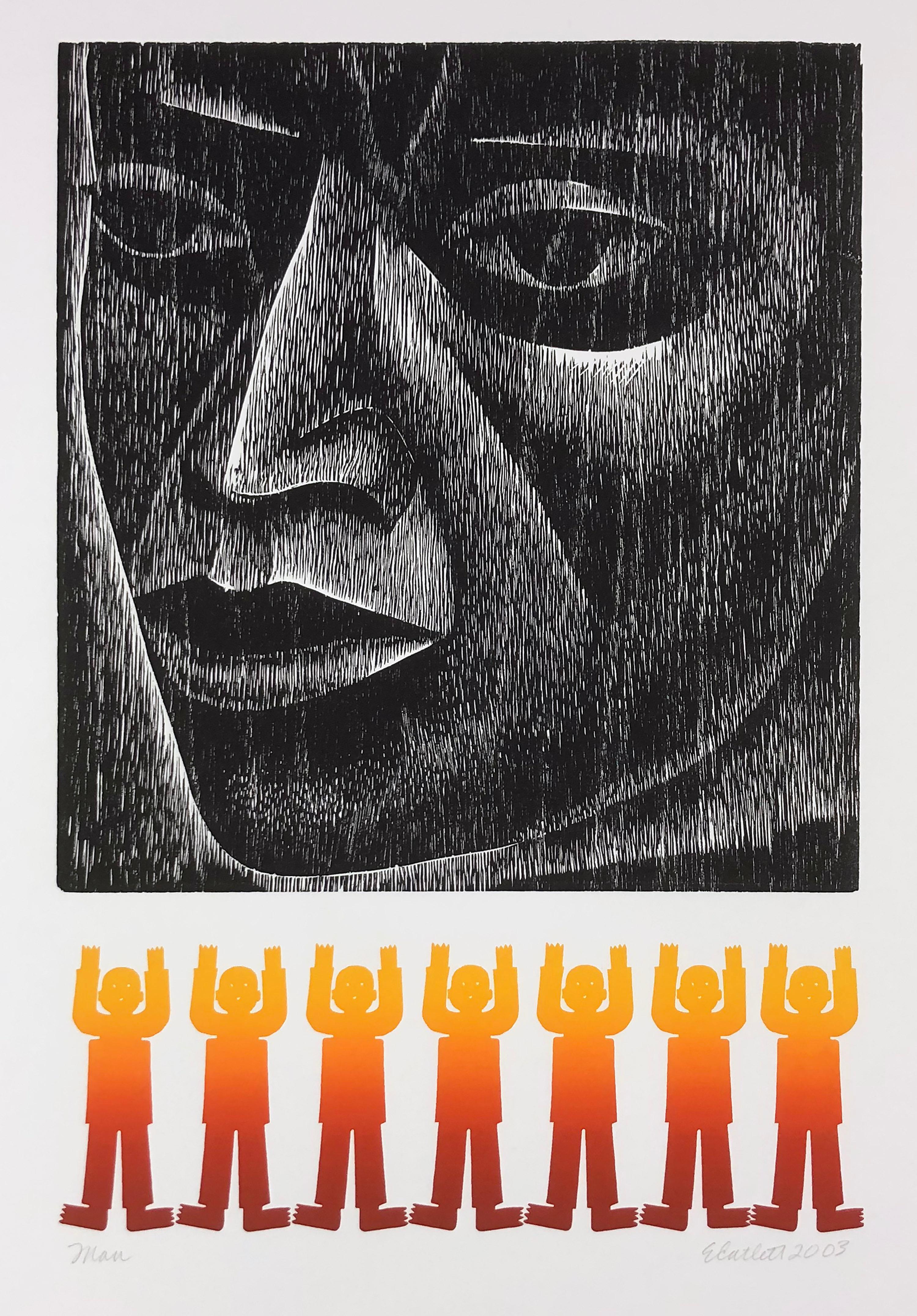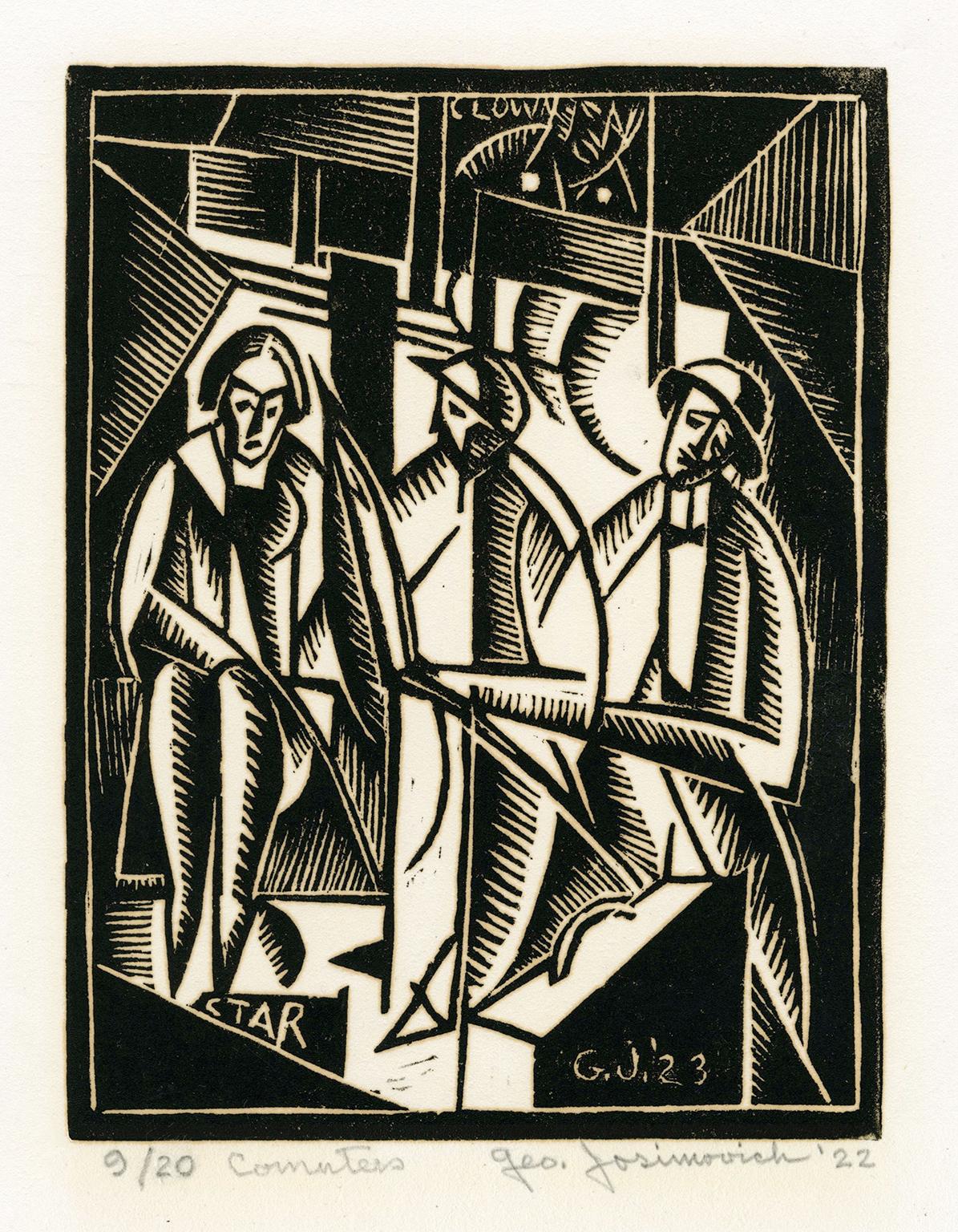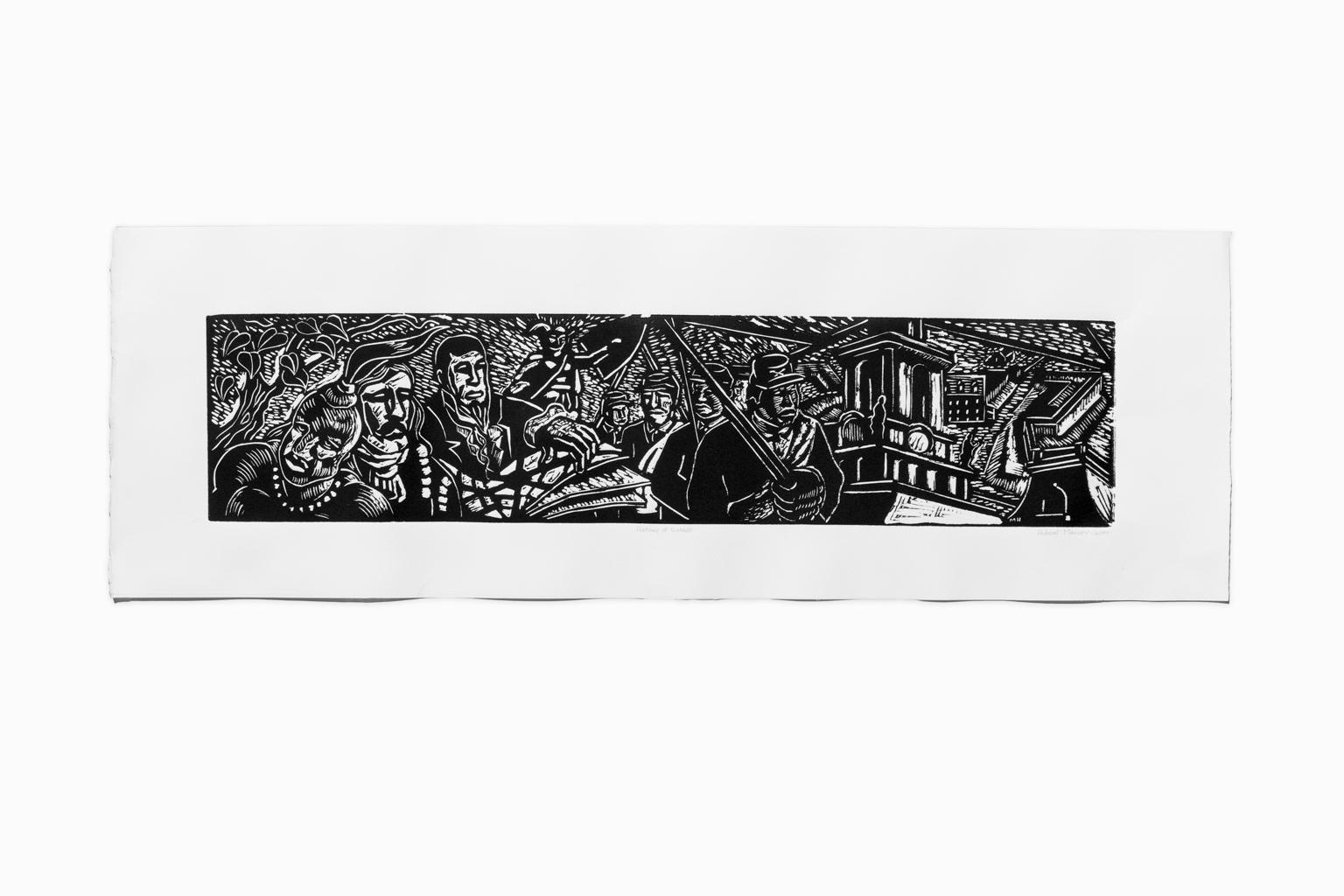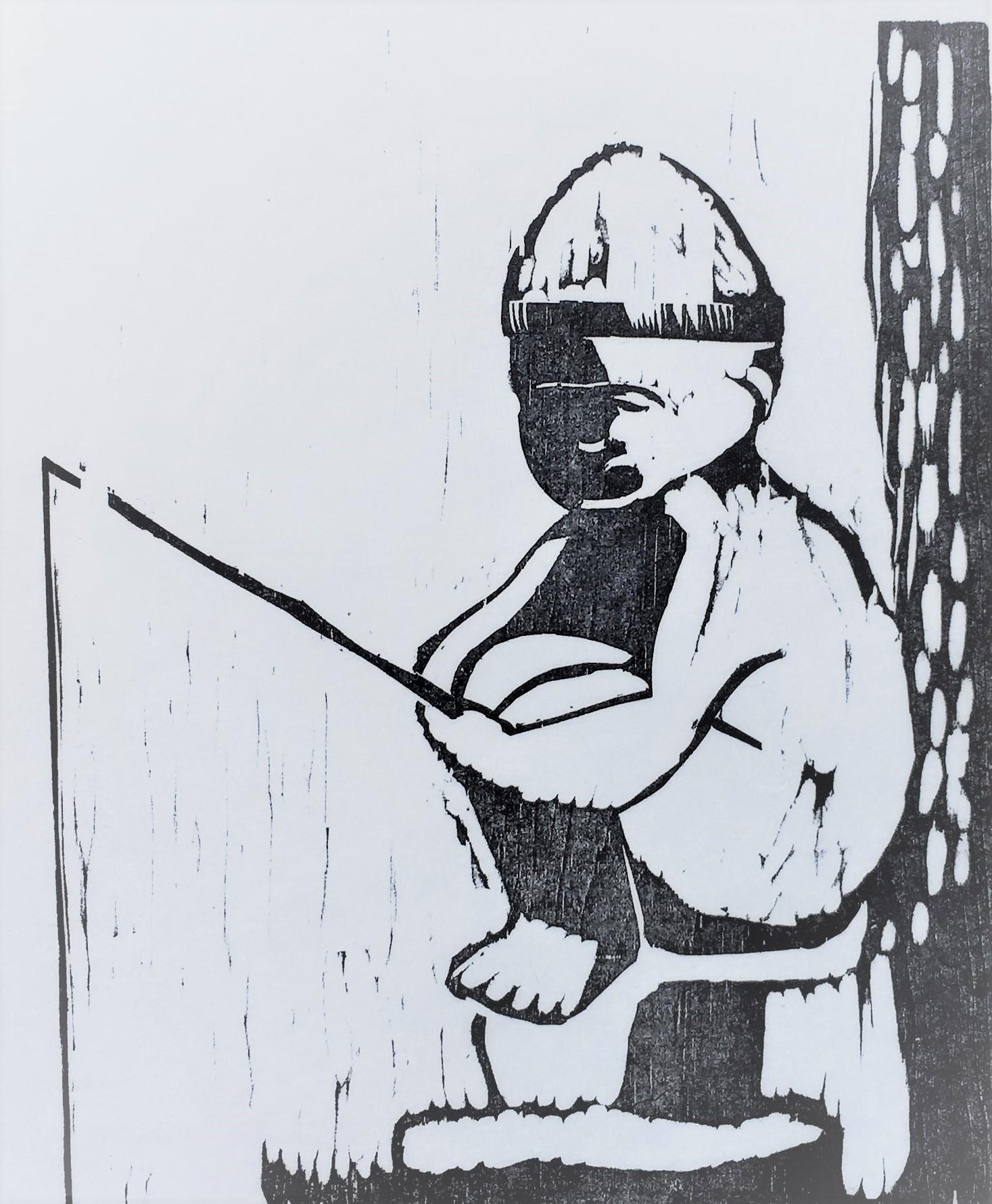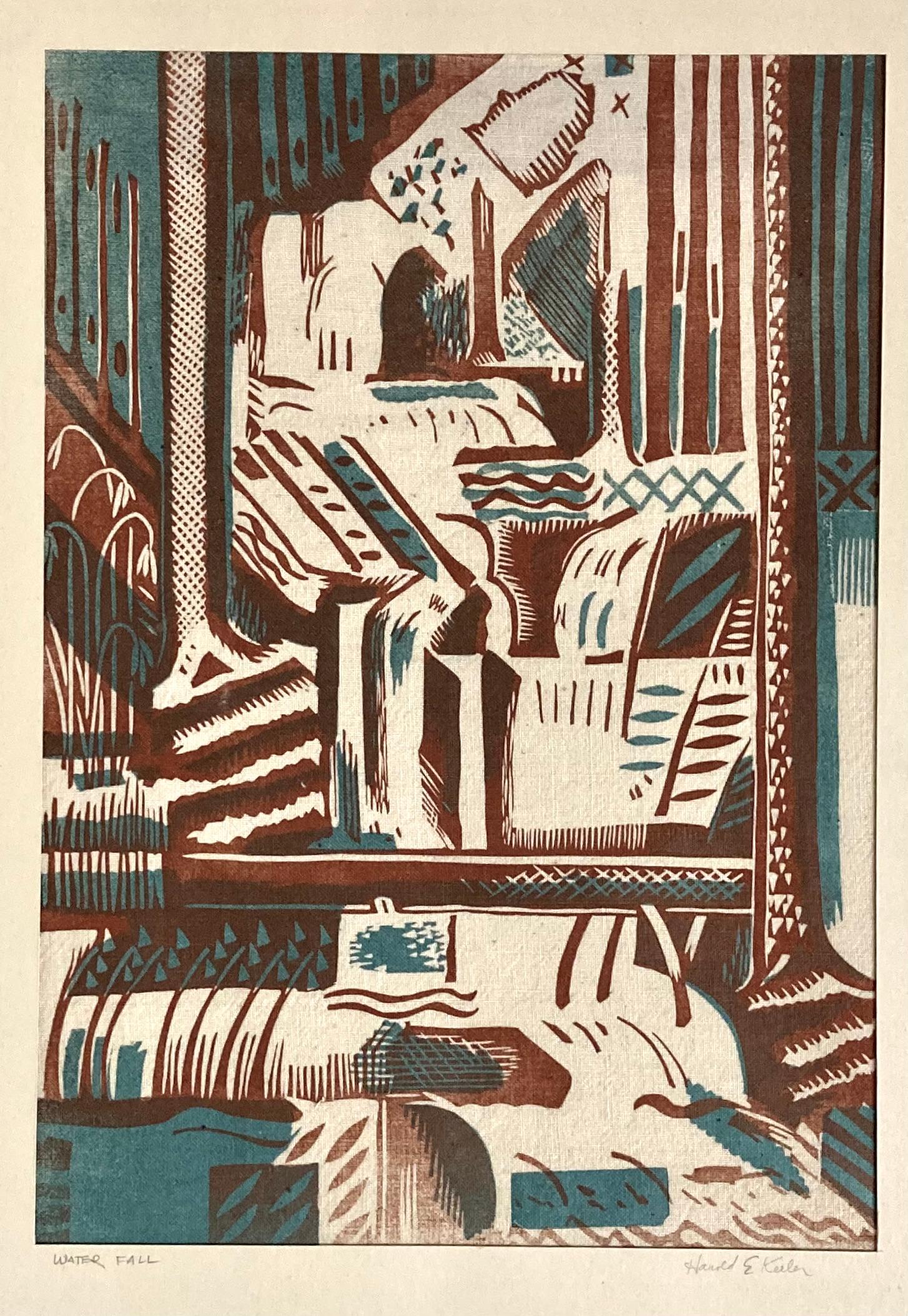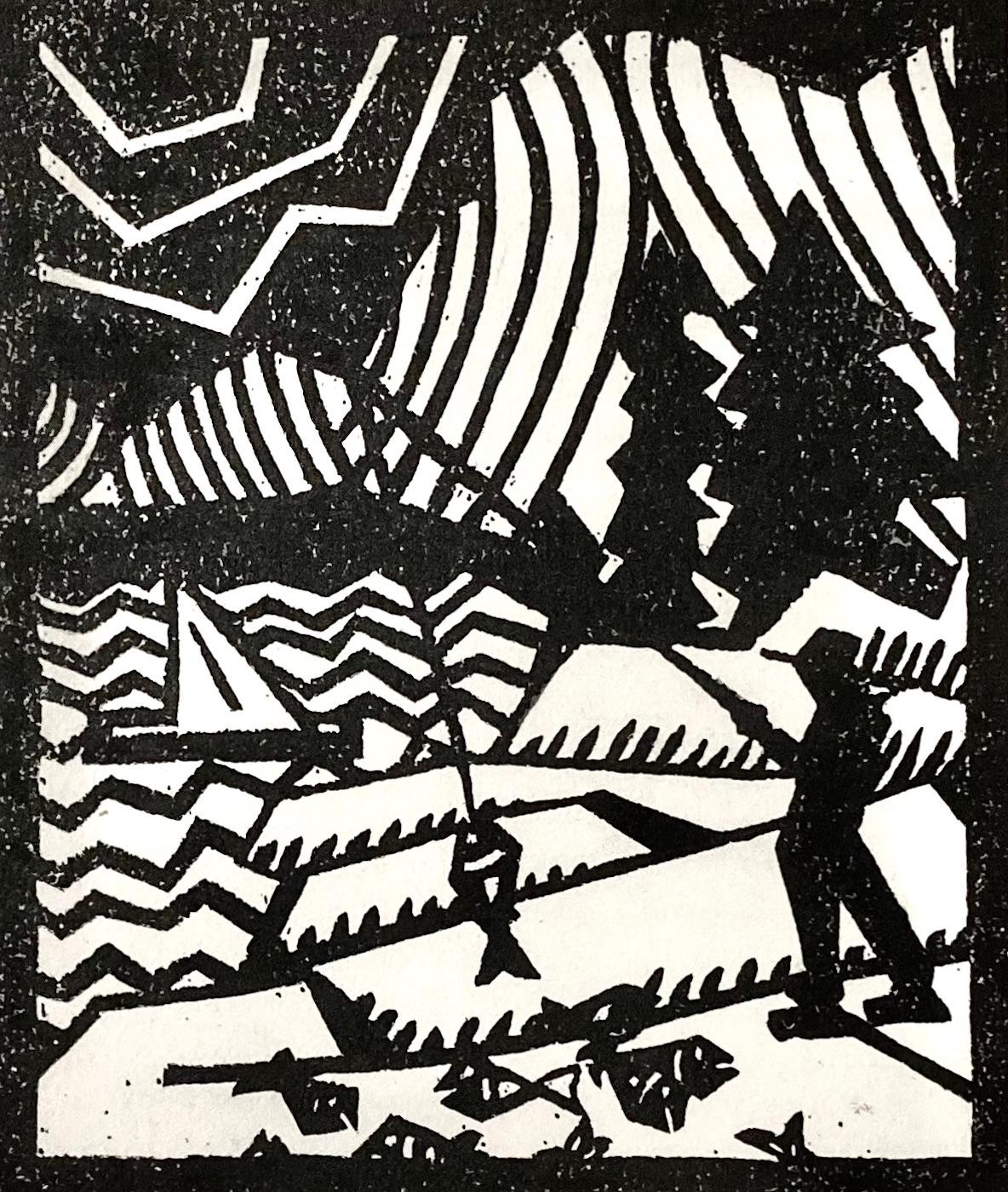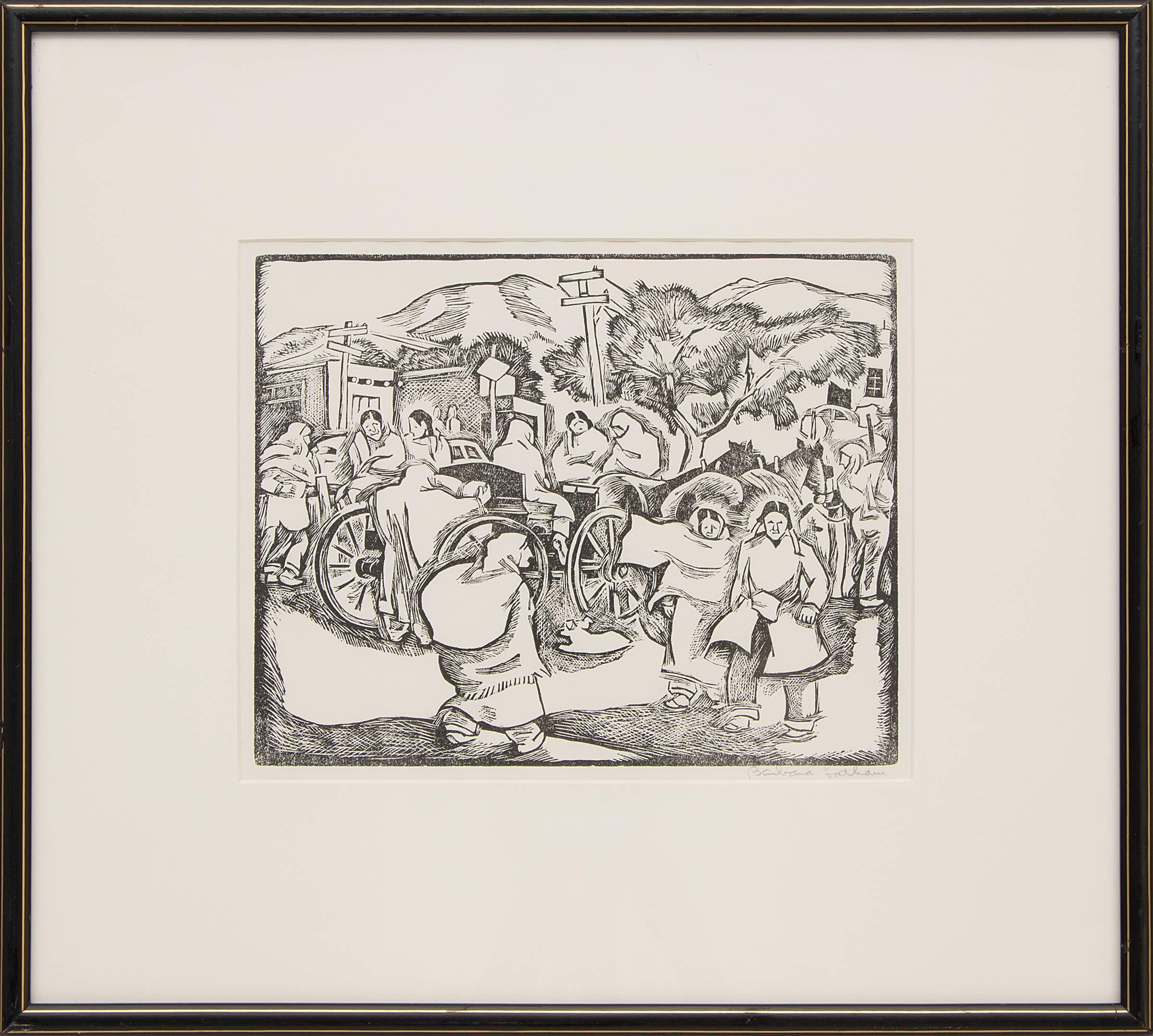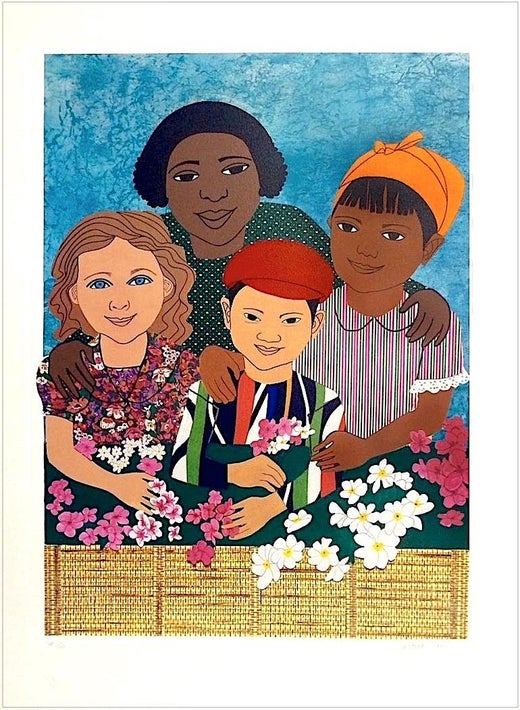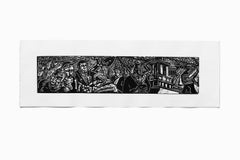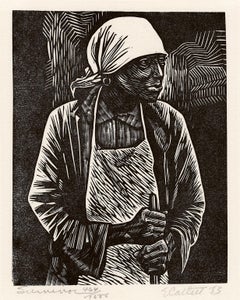
Survivor
View Similar Items
Elizabeth CatlettSurvivor1983
1983
About the Item
- Creator:Elizabeth Catlett (1915 - 2012, American)
- Creation Year:1983
- Dimensions:Height: 9.38 in (23.83 cm)Width: 7.44 in (18.9 cm)
- Medium:
- Movement & Style:
- Period:
- Condition:
- Gallery Location:Myrtle Beach, SC
- Reference Number:Seller: 1035631stDibs: LU53234814271
Elizabeth Catlett
Promoting social change was Elizabeth Catlett’s prime motivation as an artist. The granddaughter of enslaved people, Catlett was born in Washington, D.C., in 1915 and spent her adult life driven to create sculptures, prints and paintings that would reach, celebrate and uplift those who were barely visible in art.
“I have always wanted my art to service Black people — to reflect us, to relate to us, to stimulate us, to make us aware of our potential,” Catlett said of her work in the 1978 book Art: African American. She studied art history, drawing and other disciplines at Howard University, and as an MFA student at the University of Iowa, her mentor, the painter Grant Wood, advised her to “take as her subject what she knew best.” As she later told an interviewer, “The thing that I knew the most about was Black women, because I am one, and I lived with them all my life, so that’s what I started working with.”
The centerpiece of Catlett’s spring 1940 thesis project, Negro Mother and Child — a figure of a Black mother embracing her child, carved from Indiana limestone — was awarded first place for sculpture at the American Negro Exposition in Chicago held that year.
Catlett taught art at Dillard University in New Orleans — where she battled discrimination daily — and met her first husband, artist Charles White, while living in Chicago. She resigned from Dillard in 1942 and moved to New York City. There Catlett befriended painter Jacob Lawrence and studied lithography and other media at the Art Students League. Inspired by her studies with Ossip Zadkine, she began to incorporate abstract forms into her wood and stone sculptures.
In 1946, a grant supported her travel to Mexico to study its murals and graphic art. As Catlett had experienced the barbaric and deeply destructive system of racial segregation that the Jim Crow laws enforced in the United States, Mexico felt like a welcome escape. She would make the country her home and create much of her work there, divorcing White and marrying painter and printmaker Francisco Mora of the Taller de Gráfica Popular (People's Graphic Workshop), or TGP, in 1947. She collaborated with TGP, a graphic arts workshop dedicated to social issues located in Mexico City, on a number of works, including one of her best-known linoleum cut prints, Sharecropper (1952). The heroic depiction of an anonymous farm worker was intended to draw attention to the plight of Black tenant farmers who were ruthlessly exploited by the era’s white landowners.
Another iconic work of Catlett’s is Black Unity (1968), a raised fist sculpted from cedar, smooth and gleaming, with one side taking the form of two faces that resemble carved African masks. In the same year, the raised fist, a powerful symbol of the Civil Rights struggle and emblem of the Black Power movement, had been immortalized by two Black American athletes, John Carlos and Tommie Smith, who raised their black-gloved fists during the playing of the “Star-Spangled Banner” at the Summer Olympics in Mexico City.
Catlett was a professor of sculpture at the National Autonomous University of Mexico’s School of Fine Arts in Mexico City from 1958 until 1976, when she retired to focus on making art, exhibiting extensively in the years that followed. In 2003, she completed the Ralph Ellison Memorial in New York’s Riverside Park. That same year she received a lifetime achievement award from the International Sculpture Center. Her work is in the collections of museums worldwide, including the Smithsonian American Art Museum, Museum of Modern Art and the Metropolitan Museum of Art.
Find a range of authentic Elizabeth Catlett art today on 1stDibs.
- 'Survivor' — Elizabeth CatlettBy Elizabeth CatlettLocated in Myrtle Beach, SCElizabeth Catlett, 'Survivor', linocut, 1983, edition 1000. Signed, titled, dated, and numbered '914/1000' in pencil. A fine impression, on...Category
1980s American Modern Figurative Prints
MaterialsLinocut
$5,440 Sale Price20% Off - 'Commuters' — Early 20th-Century ModernismBy George JosimovichLocated in Myrtle Beach, SCGeorge Josimovich, 'Commuters', linocut, 1922-23, edition 20. Signed, dated '22, titled, and annotated '9/20' in pencil. Initialed in the block 'G.J....Category
1920s American Modern Figurative Prints
MaterialsLinocut
- Harbor with Sailboats — Early 20th-Century ModernismBy George JosimovichLocated in Myrtle Beach, SCGeorge Josimovich, Untitled (Harbor with Sailboats) ', linocut, 1923, edition 35. Signed, dated, and annotated '4/35' in pencil. Initialed 'G J' in ...Category
1920s American Modern Figurative Prints
MaterialsLinocut
- 'Fruit Piece' — 1920's American ModernismLocated in Myrtle Beach, SCPamela Bianco, 'Fruit Piece', lithograph, c. 1925. Signed and titled in pencil. Signed in the stone, lower left. Annotated 'No. 8' in pencil, upper right...Category
1920s American Modern Figurative Prints
MaterialsLithograph
- 'de Young Mansion – San Francisco' — 1930s California WPALocated in Myrtle Beach, SCMarguerite Redman Dorgeloh, 'de Young Mansion – San Francisco', lithograph, c. 1937, edition 25. Signed and titled in pencil. A fine, richly-inked impr...Category
1930s American Modern Figurative Prints
MaterialsLithograph
- 'The Start of the Race' — America's Cup, 1899By Jacques La GrangeLocated in Myrtle Beach, SCJacques La Grange, 'The Start of the Race, 1899', color woodcut, edition 500, 1934. Signed and numbered '21/500' in pencil. A fine impression, with fresh colors, on cream wove paper,...Category
1930s American Modern Figurative Prints
MaterialsWoodcut
$560 Sale Price20% Off
- ManBy Elizabeth CatlettLocated in Missouri, MOElizabeth Catlett “Man” 1975 (The Print Club of Cleveland Publication Number 83, 2005) Woodcut and Color Linocut Printed in 2003 at JK Fine Art Editions Co., Union City, New Jersey Signed and Dated By The Artist Lower Right Titled Lower Left Ed. of 250 Image Size: approx 18 x 12 inches Elizabeth Catlett (1915-2012) is regarded as one of the most important women artists and African American artists of our time. She believed art could affect social change and that she should be an agent for that change: “I have always wanted my art to service black people—to reflect us, to relate to us, to stimulate us, to make us aware of our potential.” As an artist and an activist, Catlett highlighted the dignity and courage of motherhood, poverty, and the working class, returning again and again to the subject she understood best—African American women. The work below, entitled, “Man”, is "carved from a block of wood, chiseled like a relief. Catlett, a sculptor as well as a printmaker, carves figures out of wood, and so is extremely familiar with this material. For ‘Man’ she exploits the grain of the wood, allowing to to describe the texture of the skin and form vertical striations, almost scarring the image. Below this intense, three-dimensional visage parades seven boys, printed repetitively from a single linoleum block in a “rainbow roll” that changes from gold to brown. This row of brightly colored figures with bare feet, flat like a string of paper dolls, raise their arms toward the powerful depiction of the troubled man above.” Biography: Elizabeth Catlett (1915-2012) Known for abstract sculpture in bronze and marble as well as prints and paintings, particularly depicting the female figure, Elizabeth Catlett is unique for distilling African American, Native American, and Mexican art in her work. She is "considered by many to be the greatest American black sculptor". . .(Rubinstein 320) Catlett was born in Washington D.C. and later became a Mexican citizen, residing in Cuernavaca Morelos, Mexico. She spent the last 35 years of her life in Mexico. Her father, a math teacher at Tuskegee Institute in Alabama, died before she was born, but the family, including her working mother, lived in the relatively commodious home of his family in DC. Catlett received a Bachelor of Arts degree from Howard University, where there was much discussion about whether or not black artists should depict their own heritage or embrace European modernism. She earned a Master of Fine Arts degree in 1940 from the University of Iowa, where she had gone to study with Grant Wood, Regionalist* painter. His teaching dictum was "paint what you know best," and this advice set her on the path of dealing with her own background. She credits Wood with excellent teaching and deep concern for his students, but she had a problem during that time of taking classes from him because black students were not allowed housing in the University's dormitories. Following graduation in 1940, she became Chair of the Art Department at Dillard University in New Orleans. There she successfully lobbied for life classes with nude models, and gained museum admission to black students at a local museum that to that point, had banned their entrance. That same year, her painting Mother and Child, depicting African-American figures won her much recognition. From 1944 to 1946, she taught at the George Washington Carver School, an alternative community school in Harlem that provided instruction for working men and women of the city. From her experiences with these people, she did a series of paintings, prints, and sculptures with the theme "I Am a Negro Woman." In 1946, she received a Rosenwald Fellowship*, and she and her artist husband, Charles White, traveled to Mexico where she became interested in the Mexican working classes. In 1947, she settled permanently in Mexico where she, divorced from White, married artist Francisco Mora...Category
Late 19th Century American Modern Figurative Prints
MaterialsLinocut, Woodcut
Price Upon Request - "History of Detroit" Linoleum Cut, Black Ink, African American, Mural StyleBy Hubert MasseyLocated in Detroit, MI"History of Detroit" is in the style of a mural by the master muralist from the city of Detroit, Hubert Massey. It renders in dramatic composition the ov...Category
Early 2000s American Modern Figurative Prints
MaterialsLinocut
- Statue-FisherboyBy Jane Martin VonBosseLocated in Storrs, CTStatue-Fisherboy 1967. Linoleum cut. 9 1/2 x 7 5/8 (sheet 13 x 10 5/8). Edition 16, #16. A fine impression printed on Japanese mulberry paper. Signed, titled and numbered in pencil. ...Category
1960s American Modern Figurative Prints
MaterialsLinocut
$100 Sale Price20% Off - Harold E. Keeler, Water FallLocated in New York, NYHarold E. Keeler worked in Hollywood as a set designer. That seems especially important here because the Water Fall looks a little as though it could be a woodland stage set -- to me...Category
1930s American Modern Landscape Prints
MaterialsLinocut
- Evelyn G. Schultz, TyphoonLocated in New York, NYThe only mention I can find of Evelyn G. Schultz is that she was a charter member of the San Diego Watercolor Society. But the medium of the linocut (here on tan paper) was frequentl...Category
1940s American Modern Figurative Prints
MaterialsLinocut
- Martha Reed, (Color Abstraction) (Head?)By Martha ReedLocated in New York, NYMartha Reed was the daughter of the artist Doel Reed and as an adult she joined her parents in Taos, New Mexico. There she designed clothes with a south-we...Category
Mid-20th Century American Modern Abstract Prints
MaterialsLinocut
